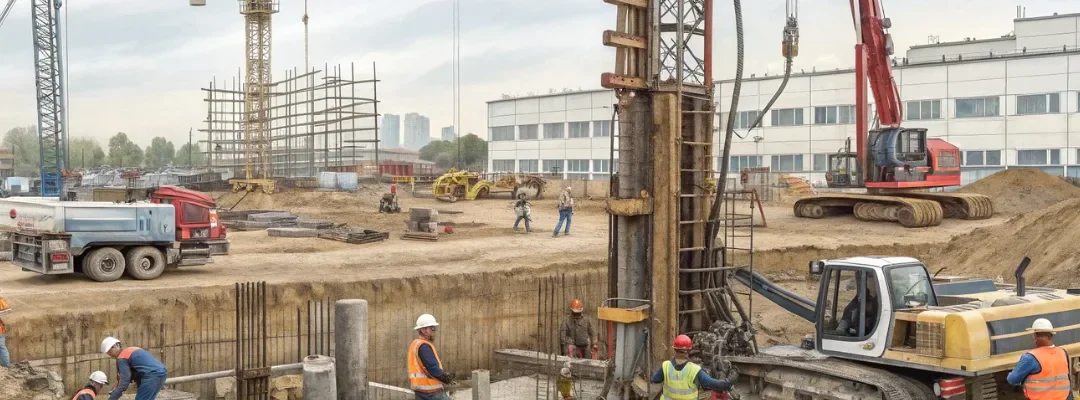Why Deep Foundations Matter
In construction, foundations are the most critical component of a building’s structural integrity. While shallow foundations may suffice for smaller structures, deep foundations are essential when building on weak soils or supporting massive loads. This comprehensive guide explores what deep foundations are, their types, methods of construction, and where and why they’re used.
What Are Deep Foundations?
Deep foundations are structural elements that transfer building loads well below the surface, often tens or even hundreds of feet deep. Unlike shallow foundations, which rest near the ground level, deep foundations reach stronger soil or rock strata to ensure stability, safety, and longevity.
When Are Deep Foundations Needed?
You typically need a deep foundation when:
- The surface soil is too weak to support the structure.
- The load is too heavy for shallow foundations.
- There’s a risk of uplift or lateral movement.
- Construction is in waterlogged, expansive, or seismic areas.
Types of Deep Foundations
1. Piles
Piles are long, slender columns driven deep into the ground. They come in various materials and forms:
- Driven piles (pre-formed and hammered in)
- Bored piles (cast in place after excavation)
- Mini piles (used in restricted spaces)
Best for: Urban environments, coastal areas, and weak topsoil.
2. Caissons (Drilled Shafts)
Caissons are large-diameter shafts drilled into the ground and filled with concrete and reinforcement.
Best for: Bridge piers, towers, and high-rise buildings.
3. Pier Foundations
Typically used in hilly terrains, piers are hand-dug and used to support low-rise structures on steep or uneven terrain.
Best for: Light structures, retaining walls, and hillside buildings.
4. Basement Foundations
Sometimes considered a type of deep foundation, basements double as usable space and structural support.
Best for: Urban residential buildings with limited ground footprint.
Materials Used in Deep Foundations
- Concrete: Most commonly used in drilled shafts and caissons.
- Steel: Offers high strength for driven piles.
- Timber: Still used in small structures or temporary foundations.
- Composite materials: For specific soil or environmental requirements.
Construction Techniques
Bored Pile Installation Process:
- Site preparation and marking
- Boring the hole to desired depth
- Inserting rebar cage
- Pouring concrete
Driven Pile Installation:
- Positioning and alignment
- Hammer driving using a pile driver
- Cutting off excess and capping
Common Equipment:
- Rotary drilling rigs
- Impact hammers
- Augers
- Slurry walls for stabilization
Real-World Applications
- Skyscrapers: Require drilled shafts to reach bedrock.
- Bridges: Use caissons or piles to resist water and lateral loads.
- Offshore platforms: Steel piles drilled deep underwater.
- Wind turbines: Supported by deep foundation systems to resist dynamic loads.
Benefits of Deep Foundations
- Improved load-bearing capacity
- Better resistance to natural forces (wind, quakes, water)
- Longevity and safety
- Versatility in complex terrains
Challenges and Considerations
- Cost: More expensive than shallow foundations
- Equipment: Requires heavy machinery and skilled labor
- Time: Longer construction timeline
- Environmental Impact: May disrupt groundwater or ecosystems
Frequently Asked Questions (FAQs)
Q: How deep is a deep foundation?
A: Typically deeper than 10 feet (3 meters), but may reach over 100 feet depending on the structure and soil.
Q: Can deep foundations be used in residential buildings?
A: Yes, especially in high-rise condos or where soil conditions are poor.
Q: What’s the difference between piles and caissons?
A: Piles are narrower and either driven or bored; caissons are larger and usually bored then filled with concrete.
Expert Tips for Choosing the Right Foundation
- Conduct a geotechnical investigation.
- Consult structural engineers early in the design phase.
- Factor in long-term environmental conditions.
- Use advanced modeling and simulation tools.

